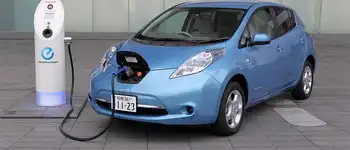India aims for 30% GHG emissions reduction
By Industrial Info Resources
NFPA 70e Training - Arc Flash
Our customized live online or in‑person group training can be delivered to your staff at your location.

- Live Online
- 6 hours Instructor-led
- Group Training Available
The policy implementation will begin by reducing power sector emissions by almost 30% by 2022, in comparison to levels recorded in 2005. The low-emission strategy includes the withdrawal of 8,000 megawatts (MW) of inefficient thermal power units from operations over the next 12 years; the addition of 27,000 MW of gas-based power generation capacity; the addition of 80,000 MW of high-efficiency supercritical thermal units; and the installation of 41,000 MW of renewable energy facilities.
About 1,100 MW of old, inefficient thermal units already have been retired. As an incentive to the states, the government proposes to compensate for 50% of the generation capacity of the unit prior to shutdown by allocating from the government's unallocated quota during the normative period of shutdown. The plan includes the provision of a huge boost to the hydropower sector by facilitating statutory clearances required to harness 41,000 MW of new hydropower capacity within the same time frame.
The policy will soon issue directives regarding the minimum efficiency that must be maintained by new power generation units. Appliances, buildings and industries also will be issued energy intensity standards. From India's 13th five-year plan period, 2018-22, coal linkages and environmental clearances will be issued to only those thermal power projects that are based on highly efficient supercritical technology. About half of the coal-based power generation units included during the 12th five-year plan period, 2012-17, will be based on supercritical technology.
The renewable energy target includes the addition of at least 10,000 MW of solar power units and 31,000 MW of non-solar units. The plan proposes to set up and operate new and existing gas-based power units by utilizing both indigenous and imported liquefied natural gas (LNG).
According to a government official associated with the plan, the entire focus of the strategy is to use superior technology and cleaner fuels. As per current conditions, the average emission of carbon dioxide (CO2) per megawatt-hour of generated power is 1 ton for subcritical units, 0.88 tons for new coal-based supercritical units, and 0.46 tons for gas-based units. By implementing the new strategy, the number could go down to 0.25 tons for gas-based power units.
In January 2010, India had informed the United Nations Framework Convention on Climate Change (UNFCCC) about its plans to implement voluntary mitigation actions aimed at decreasing the emission intensity of its gross domestic product (GDP) by 20% to 25% by 2020 in comparison to the 2005 levels. Emission intensity can be defined as the kilograms of CO2 emitted to generate 22 US cents of the GDP.
In January this year, Pramod Deo, the chairman of India's Central Electricity Regulatory Commission (CERC), said that India is considering the possibility of permitting the country's power companies to begin trading renewable energy credits from May in an effort to encourage the reduction of greenhouse gas emissions and create a multibillion-dollar market. If implemented, the plan will place India far ahead of China and other developing nations in creating a market for domestic emissions trading and, consequently, encourage investments in clean energy projects. Deo said that the nation could have a Renewable Energy Certificate mechanism by April or May this year. Independent analysts have estimated that trade in renewable energy credits could reach $10 billion by 2020.
Another plan proposes to develop a parallel system in which credits from energy-saving projects will be traded. According to Ajay Mathur, the director general of India's Bureau of Energy Efficiency, such a market is expected to grow to $16 billion within half a decade.











